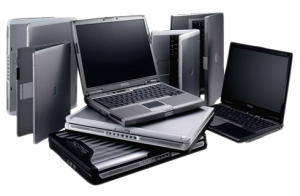 IT asset management best practices is the management of desktops {components of a computer}and computer network from the procurement stage to retirement stage of an asset. Business practices make requests and approval process as an inclusion. Procurement management, life cycle management and disapproval management are some of the common businesses.
IT asset management best practices is the management of desktops {components of a computer}and computer network from the procurement stage to retirement stage of an asset. Business practices make requests and approval process as an inclusion. Procurement management, life cycle management and disapproval management are some of the common businesses.
On the other hand, IT asset management is a set of business practices that are joint to financial, contractual and inventories to help in supporting the lifecycle and management and also decision making. In many cases, it entails; gathering of hardware and software which are detailed inventory information that is then used in making decisions on the purchase and distribution of hardware.
Today’s technology is made up of physical equipments.Andrew bum’s book, called Tubes explain on how internet is dependent on infrastructure that we see. For IT managers of today, this is a reality through various trends drawing attention to hardware asset management. Security threats are remaining to be risk for many hardware industries. Physical security is desired at centers that manage data.
Directors who corporate the hardware industry and there executives are going for clarity which is greater according to technology spending. Audit requirements fulfillment and effective oversight demonstration are also reasons for a structured enterprise hardware management programs.
Allying with best hardware assets management practices.
Management of assets of IT is no longer a process. The ISO standard{19770}which is originally applied to software was expanded to all IT assets in 2015.Sherry Irwin, the president of technology asset management, said that various organizations take hardware strategy as their focus in reliability and ownership of backup equipment.
Analytics, which is a non-explored option aiding improvement in hardware asset management. Always apply IT analytics in the management of your assets in a good way in demonstration of leadership.
Soft wares to manage hardware assets
Several organizations rely on spreadsheets in the management of technology assets. A good number of asset management tools in the market have the capability to manage both the software and the hardware assets.
Hardware life-cycle management
Hardware assets have complex life and they need to be managed in a complex way.
The main stages for a hardware asset life-cycle are:
Hardware request
Procurement.
Installation of the company’s hardware.
Deployment.
Use commands such as, any problem? Or Need upgrading?
Storage when not in use.
End of warranty and maintenance.
Retirement.
Disposal
Role of IT asset management in an organization.
IT TraceTM asset management functional point of accountability for the life-cycle management of information in any organization.
Maintenance and development of policies, standards, processes that aid an organization in managing the IT asset portfolio against risk, cost control.
Importance of effective asset hardware management.
A lot of savings are made on software in any organization. Through effective hardware asset management; big savings on hardware is made.
Environmental benefits on hardware asset management.
Hardware management helps in the reduction of wastes. Industries have been developed to recycle the electronic wastes which are a problem to many countries. It helps the company to save money to enable them get out of the existing IT assets.
Hardware asset management is really important and should be tried by all organizations.


